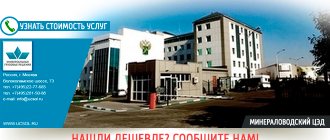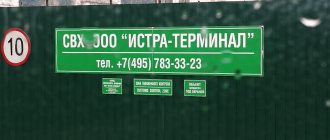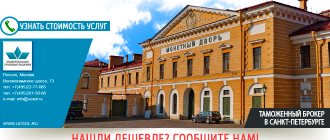What is a customs terminal
A customs and logistics terminal (CLT) is a complex of buildings, structures (warehouses), access roads and areas where inspections are carried out. They have control and documentation systems for further transportation of goods. In the terminals it is allowed to store goods or vehicles (vehicles) and order related services (for example, transportation of products).
As a rule, the complex of objects (TLT) includes:
- the customs post;
- phytosanitary control post;
- Russian fumigation squad;
- veterinary control post;
- the territory adjacent to the temporary storage warehouse (temporary storage warehouse) and the temporary storage warehouse itself;
- AZS - automobile filling station;
- open area;
- VNIIKR laboratory;
- customs and commercial warehouses.
TLT has everything you need to quickly and efficiently transport goods across the border.
Functions
TLT serves only for temporary storage of goods and vehicles before processing documents and subsequent transportation. In temporary storage warehouses, goods are under control until they are released, and there customs authorities have the right to inspect goods and take samples for research. The cargo is kept in warehouses for no longer than 3 months.
All responsibility for the safety of cargo remaining in the temporary storage warehouse lies with the warehouse employees, since these are secure storage terminals. After completing all registration procedures, the owner receives the goods in the same form in which he left them.
Note. The customs terminal is a 24-hour vehicle access area, including holidays and weekends.
TLT is often used to prepare products for further sale: the cargo is divided into parts, packaged and sent to the consumer, or repackaged and other batches of goods are formed. There, consolidation of goods from different countries takes place, combining cargo into one or several shipments to be sent to owners in different countries.
Short story
Customs and logistics terminals are one of the elements in the development of the customs infrastructure of the Russian Federation. Their creation was dictated by the Concept of customs clearance and control of goods in places close to the state border of the Russian Federation, adopted on August 29, 2008 by the Commission of the Federal Customs Service (FCS) of Russia.
According to this concept, terminals are allowed to be built in the border territories of the Russian Federation, within a strip of terrain up to 30 km wide from the customs border line along the route of the vehicle from the checkpoint into the interior of the country on the territory adjacent to the road artery or located at a distance of no more than 2 km from it.
Cost of customs clearance
If you are going abroad to bring a car, you need to calculate the cost of state duties in advance, since their size may vary depending on the year of manufacture (it is most profitable to buy a vehicle under 5 years old, and the most unprofitable purchase is a car older than 7 years ). Load capacity and type of vehicle also matter. Commercial vehicles cannot be imported on preferential terms - this point will have to be taken into account.
Before purchasing a vehicle, you need to make sure that there are enough funds in your customs deposit. It’s better to overpay than to solve problems directly at the border later.
There are factors depending on which the car owner will pay more or less:
- year of manufacture of the vehicle;
- engine size, type and power;
- declared price of the car;
- type of customs rate;
- car owner status;
- VAT rate;
- vehicle type.
Please note that heavy-duty vehicles intended for commercial use may cost more to clear through customs.
If you plan to use the services of a customs broker, you will have to pay additionally for his assistance - approximately 10-15 thousand rubles.
If the car does not meet the EURO-5 standard, it will not be possible to import it into the Russian Federation.
The import price also depends on how long the car will be in the Russian Federation. So, if it is needed temporarily (the owners are foreigners or Russian citizens permanently residing abroad), then you can use temporary import and pay less (some duties are not payable). If for some reason the period has expired and the car is still in Russia, you will have to go through the customs clearance procedure and import the car according to all the rules for a permanent stay in the country.
The formation of the total customs duty is influenced by:
- customs duty;
- VAT;
- excise tax amount (based on the volume of the vehicle’s power plant);
- amount of customs clearance fee.
TLT categories
According to the letter of the Federal Customs Service of the Russian Federation dated March 22, 2010 No. 21-16/13318, the main criterion for assessing a customs terminal is its throughput, i.e. the ability to simultaneously place a vehicle on a site intended for trucks with goods placed in temporary storage. It must accommodate trucks with products under customs control in the territory adjacent to the temporary storage warehouse.
Thus, TLTs of the first category include those that can accommodate more than 300 vehicles. The second category is received by terminals whose territory accommodates from 50 to 300 vehicles. TLTs of the third category have a capacity of 10 to 50 vehicles.
Components of TLT
The concept of terminals has two components: commercial and customs. The first includes warehouses, offices, parking lots and facilities located on the territory where subjects of foreign economic activity (Foreign Economic Activity) are provided with appropriate assistance with registration, etc. The second component includes temporary storage warehouses, on the basis of which customs authorities are necessarily located, namely a post.
If 2 or more TLTs appear in the region of operation of one customs authority, a structural unit of this authority must be present on the territory of each of them. The FCS post will always be located in the place closest to the checkpoint.
Reference. On the territory of the terminal it is allowed to install warehouses, stationary technical means of customs control, laboratories, research institutions and even educational institutions of vocational and additional education.
The rules for the arrangement, location and equipment of temporary storage warehouses are enshrined in the order of the Federal Customs Service of Russia dated December 6, 2007 No. 1497. This regulatory act became the basis for the development of additional requirements for the arrangement, equipment and location of TLT.
Electronic declaration at customs in Moscow
The innovation (electronic filing of customs declaration) was introduced quite recently, but is already in full use by many participants in foreign trade activities and all licensed customs representatives.
The time frame for submitting and releasing documents for cargo from the customs post has been reduced significantly; previously the whole process took up to a month, but now it can be done in just a few hours. All corrections and additional documents can be attached electronically and signed with your own or a broker’s EDS (Electronic Digital Seal), which is issued by a specialized crypto center. We recommend contacting the Alta company; in one or two days they will prepare an electronic signature for you, with which you can submit a customs declaration to the customs post.
Where are the customs terminals?
There are about 50 operating terminals in Russia. If we talk about such large cities of our country as St. Petersburg and Moscow, then several TLTs are located in their regions. So, in the Leningrad region it is:
- TERMINAL Logistics LLC in the city of Svetogorsk, Vyborg region;
- LLC “Customs and logistics terminal “Scandinavia”, located in the city of Vyborg;
- Vyborg Terminal LLC in Vyborg;
- LLC TERMINAL Logistics, Vyborg.
TLT LLC "Northern Star" is located in the Moscow region, the city of Kolomna. Often Moscow companies become owners of TLTs in other areas. For example, it owns TLT "Art-Service Klintsy" in the Bryansk region and TLT "Zabaikalsk" in the Trans-Baikal Territory.
In the city of Pskov, located on the Russian-Latvian border of the Pytalovsky district of the Pskov region, the TLT "Ubylinsky" LLC "Transit-Terminal" operates. It includes a temporary storage warehouse, on the basis of which a customs authority (structural unit) of Pskov customs is expected to be located. This city has the following TLTs:
- Elcom-Terminal LLC;
- LLC "Baltia +";
- NSU Logistic LLC;
- RUS-SERVICE Terminal LLC;
- LLC "ROSTEK-NTB";
- LLC "Terminal M9"
In the Kaliningrad region, which is located on the border with Poland and Lithuania:
- CJSC "Inmar";
- Sirius LLC;
- LLC "Zap-Trans"
In the Rostov region, which borders Ukraine:
- Southern Transport Lines LLC;
- ROSTEC-Inter LLC;
- TLT-Yug LLC.
In the Kursk region, which borders Ukraine:
- TLT Krupetsky LLC;
- LLC "Znamenie";
- TLT Sudzha LLC;
- F-Broker LLC.
The complete list is large. It is presented on the official website of the Federal Customs Service of the Russian Federation. The list of functioning customs and logistics terminals located near the state border of the Russian Federation, presented in the “Set” file at the bottom of the page, looks very difficult to read.
Responsibility for violations of the rules for importing a car from abroad
The severity of the violations is taken into account. Regulatory acts provide not only for serious administrative liability, but also for criminal consequences. Violations concern:
- Submitting false information and/or forged documents. For such violations, a fine of 2,500 rubles may be issued.
- Evasion of customs duties and taxes in large (from 1,000,000 rubles) and especially large (from 3,000,000 rubles) amounts. In this case, a fine of up to 500,000 rubles is provided. An alternative penalty of imprisonment for up to 2 years may be imposed.
- Illegal movement of cars across the border. Punishable by collecting an amount three times the cost of the vehicle.
Services
TLTs provide 2 types of services: government and commercial.
The first includes the performance of government functions for control and registration of transported products. This work is performed by a customs post located on the territory of TLT.
The second include:
- organization of transportation;
- assistance in customs clearance;
- services for storing products in a warehouse.
The brokerage department of TLT is able to provide services for the clearance of goods and the organization of international transportation. They advise declarants on all issues regarding foreign economic activity.
Procedure
- At the first stage, the citizen needs to find out exactly how much customs clearance of the imported vehicle will cost. To do this, you can calculate the cost yourself using a calculator: Customs calculator online
or contact a customs broker for services. Since customs duties are constantly changing, it is important to know the current data.
Functionality of a warehouse, terminal and logistics complex
From the point of view of the tenant and user of the warehouse, it is not so much the term or name that is important, but rather the actual functionality and capabilities of a particular complex. For example, it is possible to use several facilities, sites and loading and unloading areas to handle your own goods. This form is actively used by large networks of suppliers, for whom it is important to have distribution points along the way of moving their valuables.
The second option is the provision of services, including the acceptance of transport with cargo, sorting, and the organization of sending consolidated cargo along certain routes in relation to goods and valuables that do not belong to the organizer. At this level, cooperation with several customers is possible, and the potential is determined by the throughput of warehouses, sites and equipment.
Reception for storage in a specialized room - warehouse complexes and terminals have warehouses in which low temperatures are maintained, a special mode of protection against the penetration of dust and water, and other conditions if special requirements are imposed on the goods. These are refrigerated warehouses, low-temperature warehouses, freezers within warehouses, pharmaceutical warehouses, and other facilities where valuables can be placed, ensuring their maximum safety, regardless of external factors.
Large complexes always have parking lots for vehicles, loading and unloading areas, separate warm and cold warehouses, which are rented out to tenants for self-installation of equipment or long-term storage of valuables.








